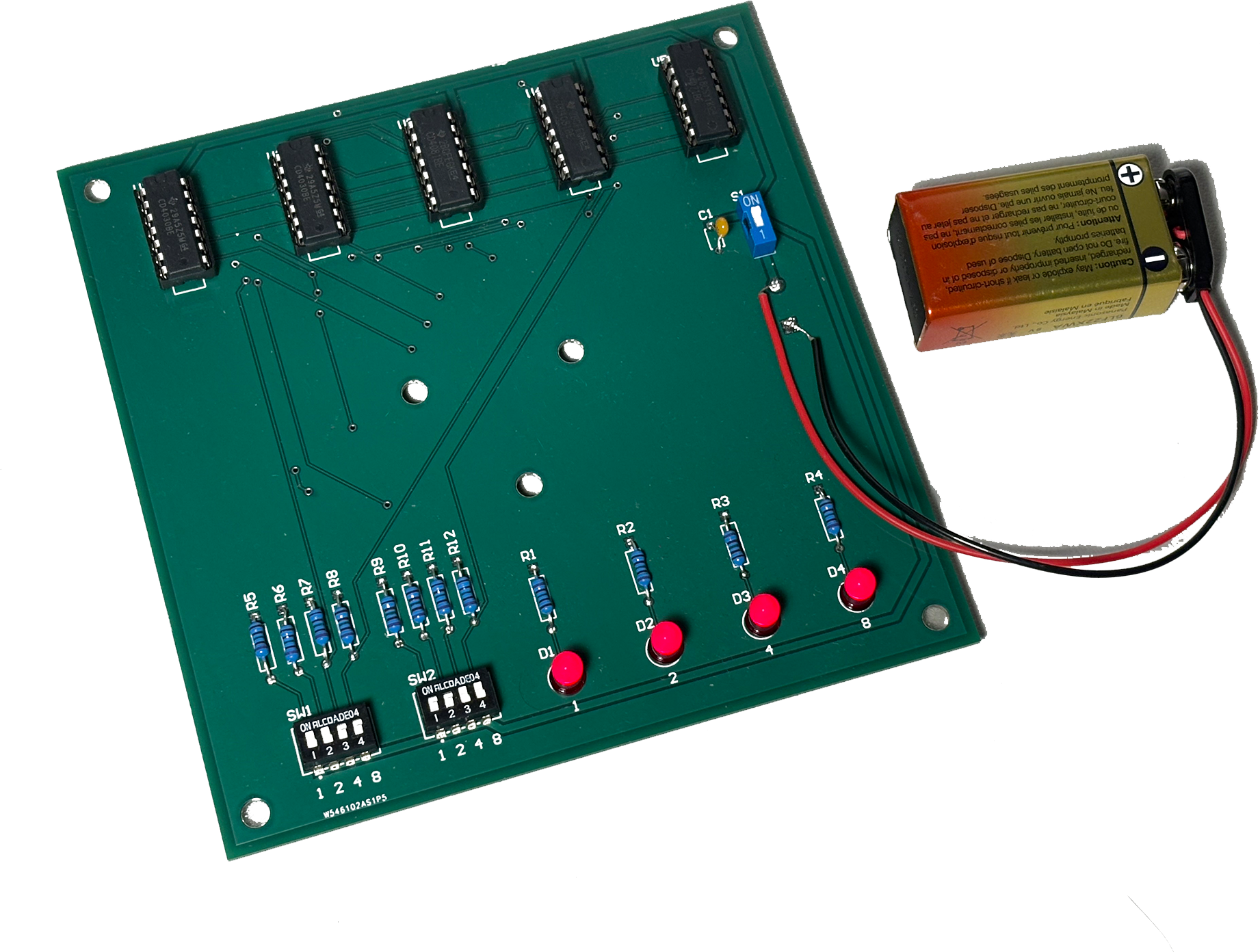This is a project I worked on outside of class with one of the extracurricular engineering organizations on campus. It was sort of positioned as a workshop for soldering as well as learning how to use Altium Designer for complete newbies.
It was a three week stint. The first week we spent theorizing a design for the four bit adder itself, talking about the software, and some other administrative things. The second week was spent actually designing the board itself. This was a bit tough as I have never used such a software like Altium Designer, but I had a very experienced "mentor" help me out.
The third week we recieved parts from PCBway and got to assembling the board itself:

The board uses four CD4030BE Texas Instrument Logic Gates in order to handle the logic and inputs. There's a simple on and off switch that cuts power from the generic 9V battery, and then there are two sets of switches that act like bits for addition. The LEDs are the outputs, and represent the four bit addition of the numbers on the switches set.
The most surprising thing about this entire project was the fact that it worked when I had assembled it, and worked exactly how four bit adders were described in my digital logic classes. I felt like this was the project that left me craving more from my four year degree, as this hands-on wasn't exactly covered or shown in labs. Having real, working, physical artifacts of my education are something I desire.